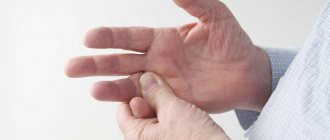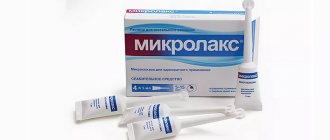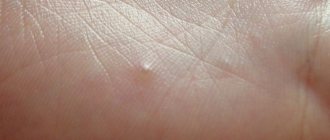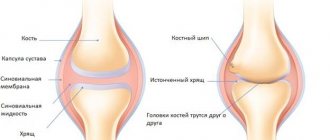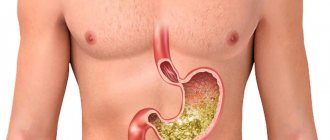Why does eczema become chronic?
Chronic eczema develops if the acute stage of the disease is not treated for a long time. Another reason is the constant influence of allergens on a person. Because of this, the acute form cannot be treated and becomes chronic. This is caused by allergens that enter the body through the respiratory system, digestive system, as well as contact allergens that negatively affect the skin. Chronic inflammation is also supported by:
- long contact with water, especially hot;
- chronic bacterial, fungal infections;
- constant stress, emotional stress and lack of sleep;
- exposure of the skin to hot, dry or cold air.
These are the main causes of chronic eczema. In addition, a relapsing course is characteristic of a number of specific forms of the disease:
- Dyshidrotic eczema. The disease is characterized by seasonal exacerbation, i.e., an increase in symptoms with the change of two contrasting seasons - hot summer and cold winter.
- Nummular eczema. It can be recognized by rashes that resemble coins in shape. Without treatment, the disease lasts for weeks and months, worsening over time. And even after treatment, the disease can easily return, that is, the patient again experiences exacerbations.
- Varicose eczema. Occurs with chronic insufficiency of the veins of the legs, in which blood circulation slows down. Eczema occurs in 2.7-10% of patients with this diagnosis. The disease has a chronic, relapsing course and a tendency to progress.
- Seborrheic eczema. Another chronic form, caused by improper functioning of the sebaceous glands. Because of this, pink itchy spots appear on the scalp, forehead and wings of the nose.
Treatment of dry eczema on hands
The most common diagnosis is dry eczema on the hands. The rash can affect either a small area of the skin or the entire hand, including the palms and nails. Typically, dry eczema first appears on the finger in the form of an itchy red spot, which grows and affects an increasingly larger area, spreading to the entire hand, and then to the entire arm. If the disease is not stopped in a timely manner, the pathology can cover a very large area of skin. The larger the focus of the disease, the longer and more difficult the therapy will be.
Treatment of dry eczema on the hands is aimed at eliminating unpleasant symptoms and achieving stable remission. To achieve a positive effect, an integrated approach is required. First of all, the cause of the disease should be eliminated: remove foods that provoke allergies from the diet, do not use cosmetics, and avoid contact with household chemicals.
You should know that even an insignificant factor can provoke irritation of inflamed skin. Therefore, it is better to avoid synthetic and wool gloves. It is recommended to wash your hands with soap containing resins and plant extracts. Losterin cream soap is perfect for this purpose.
Then the doctor selects medications that have antibacterial, antifungal and anti-allergenic properties. In this case, both general and local means are used. Ointments and creams can provide effective results. They eliminate inflammation, get rid of rashes, and moisturize dry skin.
Glucocorticosteroid drugs are especially effective, but they are addictive and cause side effects. Therefore, doctors give preference to non-hormonal ointments containing vegetable oils, extracts of medicinal plants (chamomile, birch leaves, willow bark), and petroleum products. They have a complex effect: nourish and protect the skin, disinfect wounds and activate their healing. Such products include “Losterin”. The drugs in this series can be used not only for therapeutic purposes, but also for preventive purposes.
Features of the course of chronic eczema and differences from acute
We can talk about the process being chronic if the symptoms that first appeared did not go away within 2 months. Chronic eczema, unlike acute eczema, occurs in 2 stages, such as exacerbation and remission, which replace each other. Relapses usually occur in the cold season, but improvement can be noticed in the warm season. In addition to low temperature, exacerbation can be triggered by:
- increased sweating;
- contact with allergens, such as pollen;
- stress and anxiety;
- weakened immunity;
- taking certain medications;
- consumption of allergenic foods.
In the chronic stage of eczema, there is always a rash and itching. Moreover, itching usually precedes the appearance of rashes and can be used to determine that an exacerbation will soon occur. With chronic eczema, there are more dry crusts on the skin than weeping rashes, which is why this form of the disease is sometimes called dry. The crusts crack and itch very much, causing discomfort and even insomnia.
With exacerbation, the signs of chronic eczema intensify. New weeping rashes appear next to the dry crusts, but less exudate comes out of them than in the acute form. Other characteristic symptoms include:
- severe peeling of the skin;
- violation of skin pigmentation, development of pigment spots;
- pronounced linear pattern on the skin;
- excessive compaction and hardening of the rash;
- scratches and cracks in areas of thickening.
Chronic eczema in remission is manifested by constant peeling of the lesions. The skin in these places scars, so it becomes dense, and can acquire a blue-red tint in dark-skinned people and pale pink or beige in light-skinned people.
Treatment of dry eczema
Before prescribing medications to treat dry eczema, a dermatologist will examine the skin and refer you for laboratory tests to differentiate eczema from other similar pathologies and determine the cause of the problem. If the diagnosis is confirmed, you will need to be patient, since the pathology requires long-term therapy.
Dyshidrotic and idiopathic eczema can be associated with asteatotic eczema. Symptoms of the disease often resemble psoriasis or dermatitis. Therefore, only after receiving the examination results will the doctor be able to select the necessary medications.
How to treat dry eczema on the hands and feet? The basis of therapy is local preparations (ointments and creams) that relieve unpleasant symptoms. But at the same time, the cause of the problem must be eliminated. If you get rid of only external manifestations, they will soon appear again, perhaps even in an intensified form.
Depending on the triggering factor, the doctor may prescribe tablets or injections. To eliminate symptoms, local medications are used.
Products from the Losterin line (cream, cream-soap, paste) intended for daily use will have an effective effect on asteatotic eczema.
These funds:
- relieve inflammation;
- relieve itching;
- soften the skin;
- eliminate dryness and flaking;
- suppress the development of pathogenic microorganisms.
Losterin preparations (cream, shower gel, cream soap) are made from natural ingredients. The preparations contain no hormones, dyes or fragrances. Losterine can be used for a long time. The active substances of the drugs (naphthalan, salicylic acid, urea, D-panthenol, natural oils, medicinal plant extracts) are selected in an optimal combination and form a balanced combination.
Typically, products from the Losterin series are used in conjunction with other drugs: antibacterial (if there is severe inflammation), antihistamines, metabolism improvers, restoratives, vitamins (A, group B, PP).
To achieve optimal results, the dermatologist combines local medications with traditional medicine, cryotherapy and physiotherapeutic procedures.
Diet is important. It should be based on plant and dairy products: vegetable soups, porridges cooked in water, dishes made from cabbage, carrots, and peas. The diet should also include river fish and lean meat. You should avoid spicy and fatty foods, canned food and processed foods, potatoes, eggs, tomatoes, citrus fruits, red apples, strawberries, pastries, chocolate, alcoholic beverages, coffee and tea.
The psychological state of the patient plays a significant role in successful treatment. To speed up recovery and prolong remission, it is necessary to eliminate irritating factors, not to be nervous about little things, and to remain calm. The doctor, if necessary, prescribes sedative medications and relaxation procedures.
Bibliography
- Mordovtsev, V. N. Hereditary diseases and malformations of the skin. Atlas / V.N. Mordovtsev, V.V. Mordovtseva, V.V. Mordovtseva. - M.: Nauka, 2004. - 296 p.
- Pavlova, O.V. Fundamentals of psychodermatology / O.V. Pavlova. - M.: LKI, 2007. - 240 p.
- Selissky, A. B. Handbook of skin diseases / A. B. Selissky. - M.: State Publishing House of the BSSR, 2000. - 476 p.
- Sokolova, T. V. Strategy for choosing external therapy for microbial eczema [Text] / T. V. Sokolova, A. P. Malyarchuk, L. A. Safonova // Clinical dermatology and venereology. - 2021. - No. 3. - P. 46-63.
- Atopic dermatitis. School for patients and their relatives / A.N. Lvov and others - M.: Miklosh, 2010. - 176 p.
- All-Russian Congress of Dermatovenerologists: Kazan, 2009. P. 93.
- Fitzpatrick's Dermatology in Clinical Practice. In 3 volumes. Volume 2. - M.: Panfilov Publishing House, 2021. - 162 p.
- Eczema and contact dermatitis. - Moscow: SINTEG, 2009. - 965 p.
Seek help from a dermatologist
It is important to confirm the diagnosis before prescribing either treatment or diet.
If you find suspicious rashes on your skin, be sure to consult a dermatologist. The effectiveness of treatment directly depends on the correctness of the diagnosis. Therefore, it is important not to delay or self-medicate. We invite you to a consultation at the PsorMak Institute for Healthy Skin. We have extensive experience in successfully treating various types of dermatitis, and we guarantee the achievement of long-term remission. April 28, 2021
Author of the article: dermatologist Mak Vladimir Fedorovich
Treatment of dry eczema on the legs
Asteatotic eczema on the feet is caused by the same factors as dry eczema on the fingers. Among all the reasons, it is especially worth highlighting an allergic reaction to synthetic and wool socks.
In the photo of dry eczema on the legs, the symptoms of the disease are clearly visible. The worst thing is when eczema is combined with tylotic dermatosis. In this case, severe, persistent itching prevents normal movement. Therapy is complicated by the fact that the feet are constantly under stress.
Treatment of dry eczema on the legs, its manifestations are visible in the photo, is no different from the treatment of eczema on the hands. We must not forget that complete recovery is possible only after eliminating the cause. Otherwise, it will not be possible to avoid constant relapses, which will manifest themselves in a more severe form each time.
Traditional medicine can be used as a complement to drug therapy. They will relieve unpleasant symptoms and significantly alleviate the condition.
Causes of the disease
Until now, doctors cannot unequivocally answer the question about the causes of the development of eczema in adults and children. Most experts agree that the disease develops as a result of the complex influence of endogenous factors (for example, genetic predisposition) and exogenous factors (occupational, etc.). Simply put, external factors most often include various allergens that affect the body constantly or for a long time. To internal, endogenous – genetic predisposition. It has been proven that if there is a person with eczema in the family, the risk of the disease in relatives increases significantly. If one of the parents (mainly the mother) is ill, the risk of developing eczema in a child is approximately 40%; if both parents are ill, it is almost 60%
The most common factors that provoke eczema:
- chronic allergies;
- disturbances in the functioning of the endocrine system;
- psycho-emotional triggers.
They also additionally identify factors that can weaken the body’s immunity and thereby provoke the development of eczema. This:
- chronic inflammatory processes;
- secondary immunodeficiencies;
- diseases of the digestive system;
- foci of chronic infection in the body.
Among the possible causes of eczema are psychosomatics: constant stress, various disorders of the autonomic system, anxiety and depression. Patients often exhibit functional changes in the activity of the central nervous system, a predominance of the activity of unconditioned reflexes over the activity of conditioned ones, as well as an imbalance between the activity of the sympathetic and parasympathetic parts of the autonomic nervous system.
Prevention
For prevention, two types of care products are used.
- Moisturizing products with powerful emollients, such as urea and glycerin, soften and prevent the body from drying out due to the fact that, distributed in the outer layers of the epidermis, they attract moisture. They are applied throughout the day as needed.
- Natural oils, waxes and silicones create a protective barrier on the surface of the skin, preventing moisture evaporation. They are best used after a shower and applied to a damp area of the body.
How is coin-shaped eczema diagnosed?
A dermatologist may suspect coin-shaped eczema based on external signs. To confirm, standard tests are prescribed, including a general analysis of urine and blood, and a biochemical blood test. The patient may need to consult a neurologist, gastroenterologist, allergist and endocrinologist.
Coin-shaped eczema must be distinguished from other types of dermatitis, psoriasis, scabies and dermatomycosis. For this purpose, an enzyme immunoassay test of blood for antibodies is performed. To identify an infection, a microbiological examination of a smear from the site of inflammation is carried out. It also helps determine antibiotic sensitivity and prescribe the correct treatment.
